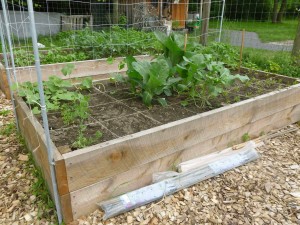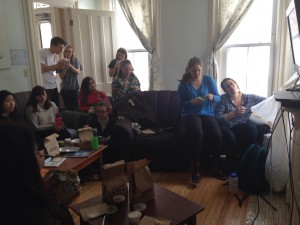By Ben Schick ’17
As March comes to a close and Hamilton begins to thaw out of the frozen tundra that has engulfed campus for four months, Colgate prepares for the coming of its annual 13 Days of Green. 13 Days of Green is a campus wide event lasting from April 10-April 22 that aims at raising environmental awareness on campus. The event offers educational programming, events, and competitions that engage students in sustainability on campus and give them the tools necessary to lead a sustainable lifestyle.
This year’s 13 Days of Green consists of a variety of events that highlight different ways organizations around campus are working to make Colgate more sustainable. The full schedule for the 13 Days of Green will be available on the Colgate mobile app starting next week. However, here are some events to look out for:
- Ongoing: Window sticker design competition. Colgate wastes large amounts of heat every winter due to open windows in residence halls. Students can help Colgate save heat and energy by designing a window sticker reminding students to keep their windows shut during the winter. The artist of the winning design will win a gift card to a restaurant in downtown Hamilton.
- April 11: Head down to the Community Garden at 1pm to get a tour of the garden and learn about sustainable gardening practices. Food from Hamilton Whole Foods will be provided.
- April 14: Sustainable and local food brownbag. Led by Environmental Studies Professor April Baptiste and Director of Sustainability John Pumilio, this brown bag will look at Colgate’s initiatives to incorporate sustainably grown and local foods into our dining halls. We will also explore the emerging local food market network in Hamilton, NY.
- April 16: Vegetarian dietician appointments. Led by the Shaw Wellness center, students have an opportunity to talk one-on-one with a vegetarian dietician to learn how to adopt a nutritious and balanced plant-based diet. Sign up for a one hour slot from 4-8pm by emailing rhangley@colgate.edu.
- April 18: Tree planting with COVE Sidekicks from 1-3pm. Sidekicks will be celebrating Earth Day by planting saplings at the top of the old ski hill. There will also be tours of the Darwin Thinking Path and environmentally friendly snacks. All are invited!
- April 22 (Earth Day): The 13 Days of Green culminates with the Oak Awards. Formerly known as the Green Awards, the “Oakies” recognize individuals and groups on campus that have made a positive impact on Colgate’s campus through sustainability-related efforts. Come join us for the award ceremony and free dinner from Hamilton Whole Foods. In addition, if you wish to nominate an individual or group for an Oakie, please fill out this form:https://docs.google.com/a/colgate.edu/forms/d/1zaYwaqVmhvylk0CEKCvKMbAqOxiQyHUukiaEI6fzWy0/viewform.
While the 13 Days of Green is a fantastic event that engages students in sustainable living at Colgate, it is by no means the only opportunity students have to get involved in sustainability on campus. There are countless ways students can immerse themselves in sustainability on campus. The events, workshops and competitions of the 13 Days of Green is meant to serve as a starting point for students on their road to living a sustainable life now and in the future. For more information, on how you can get involved beyond the 13 Days, visit colgate.edu/green.








